Rice cakes are often considered a simple and healthy snack option. Their storage stability, crunchy texture, and versatility make them a great choice for quick nutrition. However, questions arise regarding their actual health benefits. From a nutritionist’s perspective, looking at rice cakes, specifically focusing on rice cakes calories, will yield an insightful analysis. Furthermore, this article will suggest nutritional benefits to enhance the value of rice cakes as part of a balanced diet.
1. What Are Rice Cakes?
Rice cakes are a versatile snack crafted from rice or rice flour, prepared through methods such as baking, air-frying, steaming, deep-frying, or stir-frying. They come in both savory and sweet varieties, with some enhanced with flavors like chocolate or saffron.
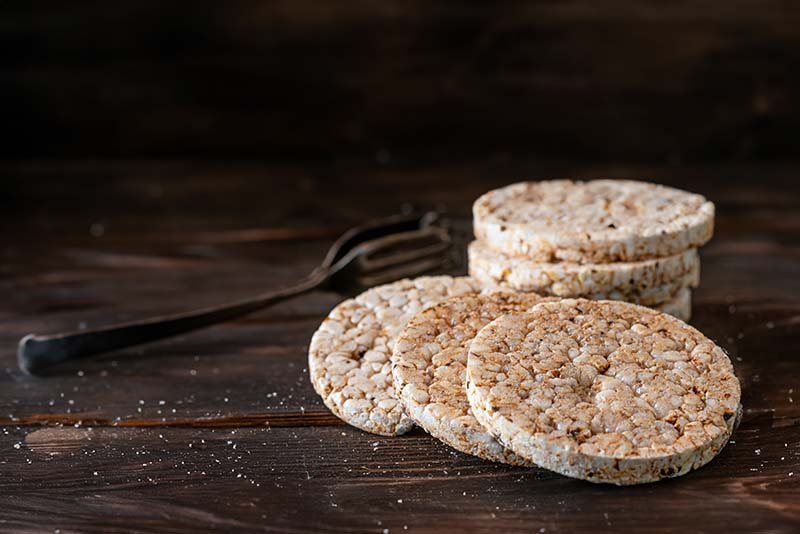
Known for their popularity, rice cakes have become a common meal in many households. Their low-fat content makes them an appealing choice for health-conscious individuals. These snacks, known for their dry and crispy texture, can be enjoyed plain or with a variety of toppings to enhance their flavor. Often, people opt for rice cakes as a lower-calorie alternative to traditional bread and crackers.
2. How Are Rice Cakes Made?
Rice cakes are created through a process where rice is exposed to intense heat and pressure. This method makes the rice grains expand and bind together, forming the base of the rice cake. In production, these rice bases are typically cooked in individual-sized cake pans or molds. After cooking, they are dried and infused with various flavors and additives to enhance taste. For those who prefer a homemade touch, rice cakes can also be crafted in your own kitchen. This involves blending cooked rice with a selection of herbs, milk, and seasonings to add depth of flavor. The mixture is then gently browned in butter, creating a delightful homemade snack.
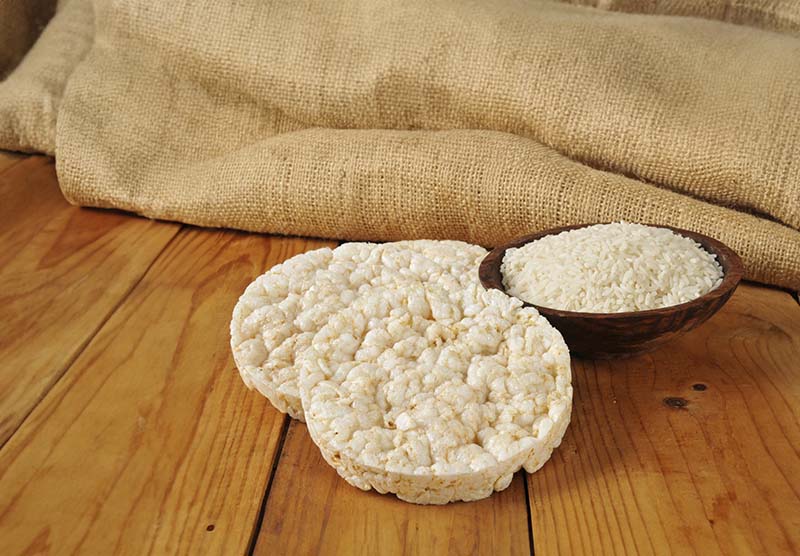
Homemade rice cakes offer the advantage of customizing ingredients to suit dietary preferences or restrictions. For a healthier option, consider using whole grain rice and minimal butter or substituting it with healthier oils like olive oil. This not only adds nutritional value but also gives you control over the sodium and additive content, often high in store-bought varieties.
3. Nutritional Composition of Rice Cakes
Rice cakes are crafted from rice flour and water, presenting a snack that is generally low in fat while being rich in carbohydrates. Here’s a detailed look at the nutritional makeup of rice cakes:
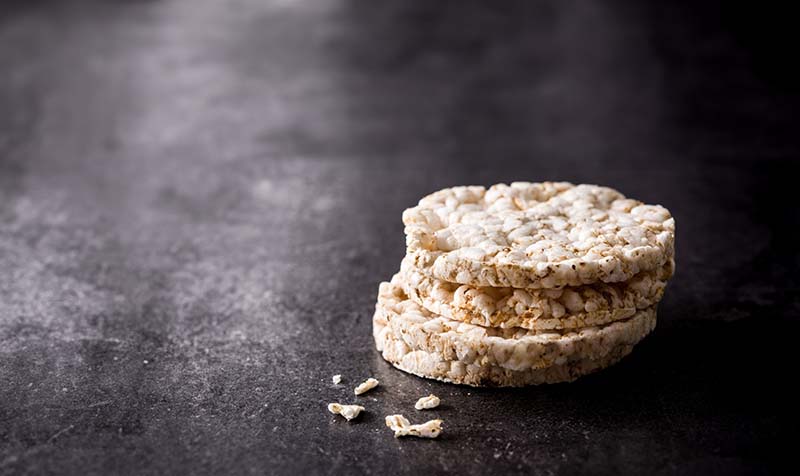
3.1 Calorie Content in Rice Cakes
The number of calories in rice cakes may vary depending on the brand and specific type of rice cake. On average, a regular rice cake weighing 30g can contain about 118 calories.
- Calories: 118 per 30g serving
- Carbohydrates: 24g in every 30g
- Protein: 2.1g for each 30g
- Fat: 1.3g per 30g portion
- Fiber: 1.3g in a 30g serving
- Sodium: 21mg per 30g
3.2 Vitamins and Minerals in Rice Cakes
While rice cakes aren’t particularly known for being rich in vitamins and minerals, they do offer small quantities of essential nutrients:
- Iron: 1.5mg per 100g
- Potassium: 428mg per 100g
- Magnesium: 131mg per 100g
- Zinc: 3mg per 100g
- Copper: 0.45mg per 100g
- Selenium: 24.6mcg per 100g
4. Health Benefits of Rice Cakes
Rice cakes provide several health benefits that cater to various dietary needs and preferences:
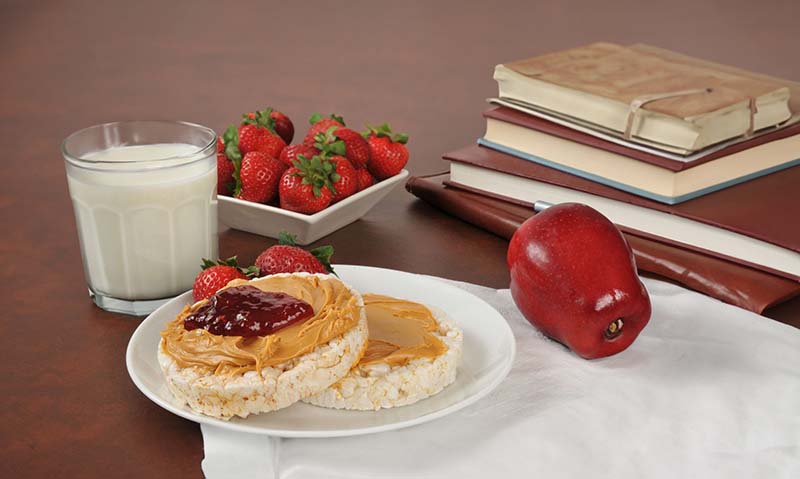
4.1 Low-calorie Content
Rice cakes are known for their low-calorie profile, with each cake typically containing between 100 to 120 calories, though this can vary slightly depending on the flavor. This attribute makes them an ideal snack choice for individuals who are monitoring their calorie intake.
4.2 Gluten-Free Option
Naturally gluten-free, rice cakes are an excellent snack option for those with gluten sensitivities or celiac disease. Their gluten-free nature ensures that they can be safely incorporated into gluten-free diets without concern.
4.3 Varieties with Whole Grains
Many rice cakes are made from whole grains, like brown rice, rather than refined grains. Whole grain rice cakes not only retain more of the natural nutrients found in rice but also provide higher levels of protein, lipids, minerals, and vitamins compared to their white rice counterparts.
5. Potential Downsides of Rice Cakes
Rice cakes are often chosen as a diet-friendly snack, but there are important considerations to bear in mind regarding their nutritional value and their effect on blood sugar.
5.1 Lack of Essential Nutrients
Rice cakes are known for being low in calories and fat. However, they fall short in providing essential nutrients like vitamins, minerals, protein, and fiber. In comparison to other snacks, rice cakes might not be as nourishing or fulfilling, leading to less dietary satisfaction and potentially more snacking.
5.2 Impact on Blood Sugar Levels
Another aspect to consider is the effect on blood sugar levels. Flavored rice cakes, in particular, have a high carbohydrate content that can quickly elevate blood sugar. This rapid increase is something to watch out for, especially for individuals managing diabetes or insulin resistance.
5.3 Rice Cakes in a Diet Plan
Rice cakes can be a versatile and diet-friendly addition to your meals. Here’s how to include them in your diet effectively and some inventive ways to savor them.
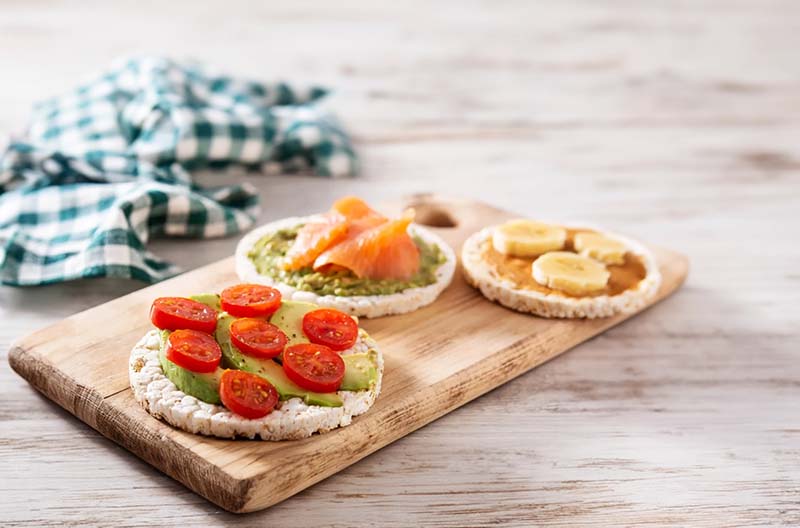
5.4 Incorporating Rice Cakes into a Balanced Diet
Rice cakes are a great low-calorie, low-fat option for those monitoring their calorie consumption. They’re also gluten-free, making them an excellent choice for individuals with gluten sensitivities or celiac disease. To get the most nutritional benefit, opt for rice cakes made from whole grains, as they offer more nutrients compared to those made from refined white rice.
5.5 Creative Ways to Enjoy Rice Cakes
There are numerous enjoyable and nutritious ways to use rice cakes:
- Spread them with low-fat toppings, fresh fruits, or veggies.
- Use them as a base for light deli meats, vegetables, and low-fat cheese.
- Pair them with lean proteins and spreads like hummus or reduced-fat peanut butter.
- Crumble them into salads for an added crunch and nutrition.
- For a dessert, dip them in milk and have them with a scoop of ice cream.
6. Conclusion
In conclusion, rice cakes are a versatile and low-calorie option for those mindful of their diet. Understanding the nutritional value, particularly the aspect of rice cakes calories, and the best ways to enjoy them can greatly enhance your snacking experience while keeping a check on your calorie intake. We’d love to hear how you’ve incorporated rice cakes into your diet with an eye on their calorie content. Share your stories and feedback with us! For more insightful and health-conscious advice, don’t forget to explore our other blogs at Biosculpture.


